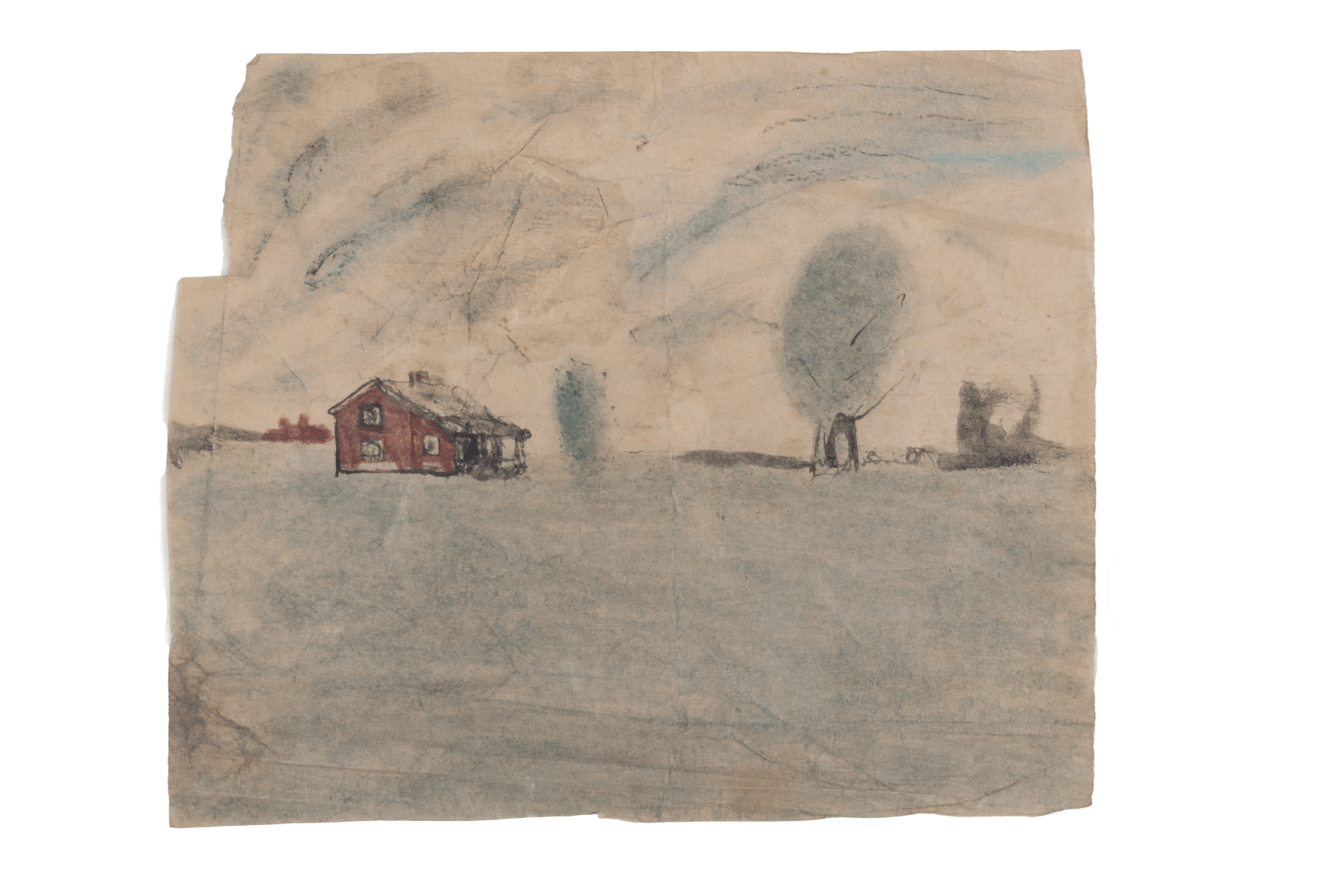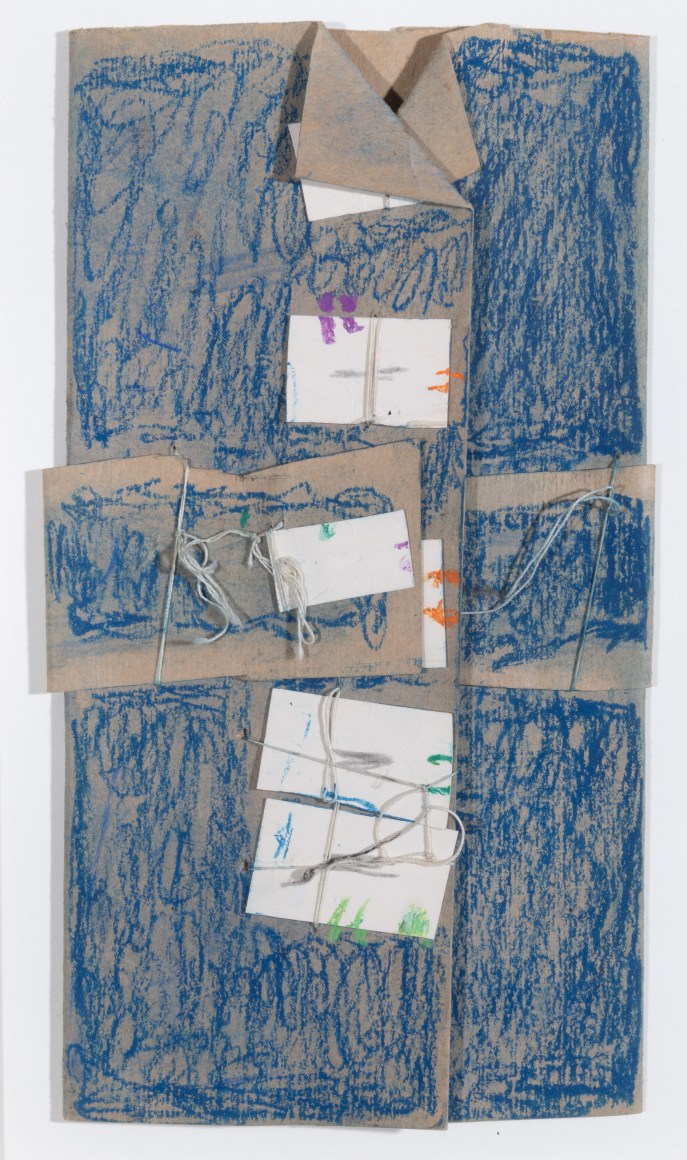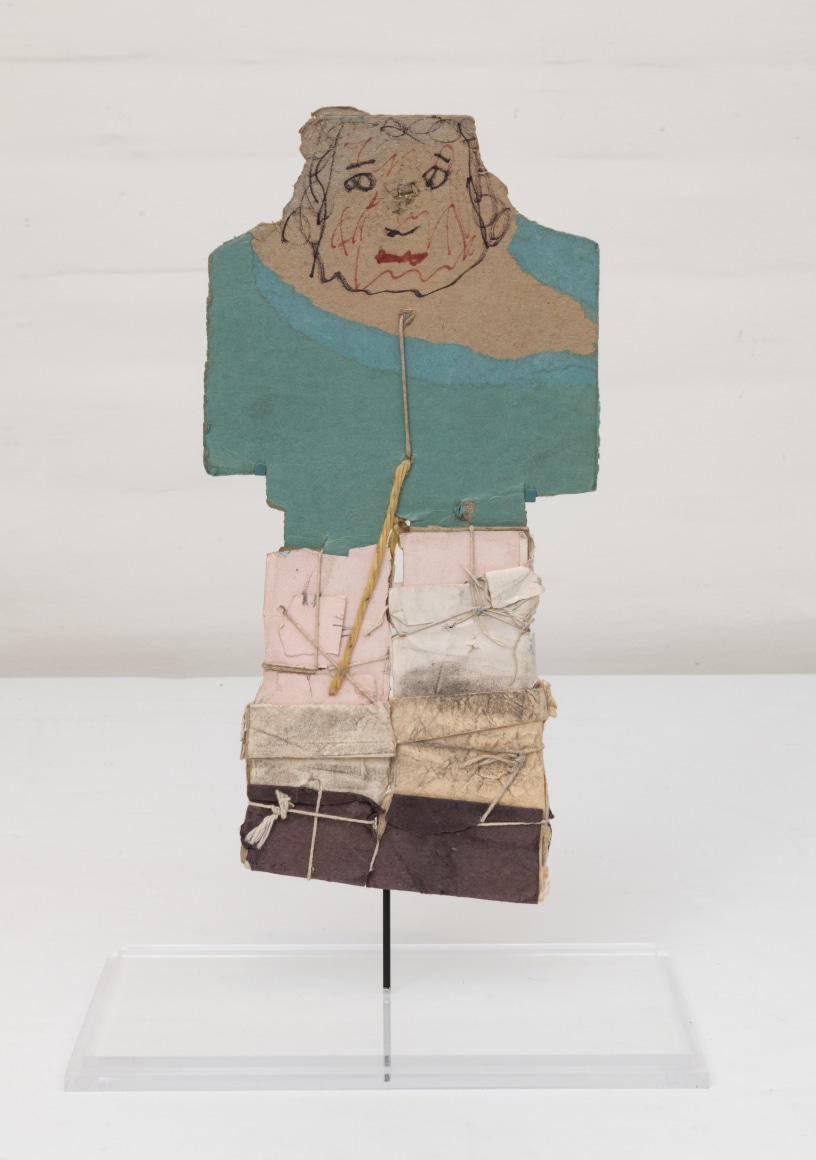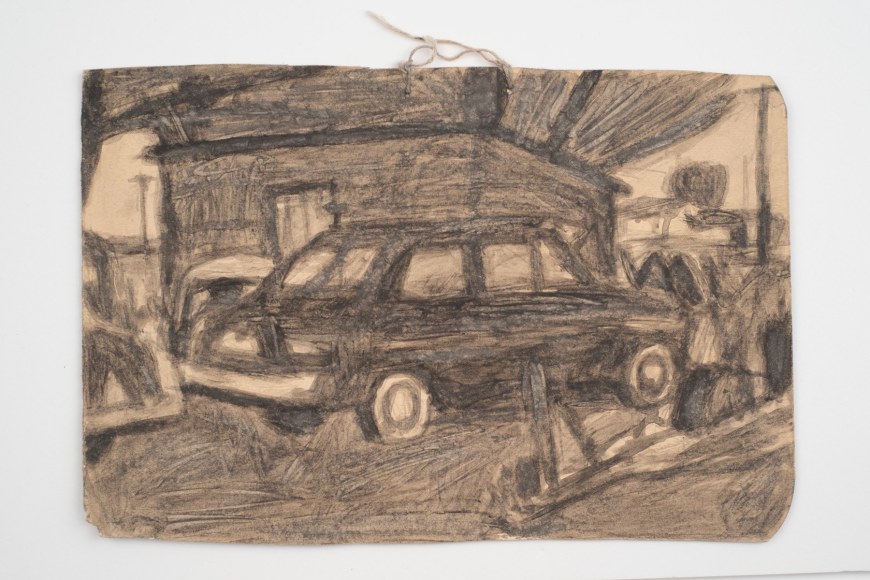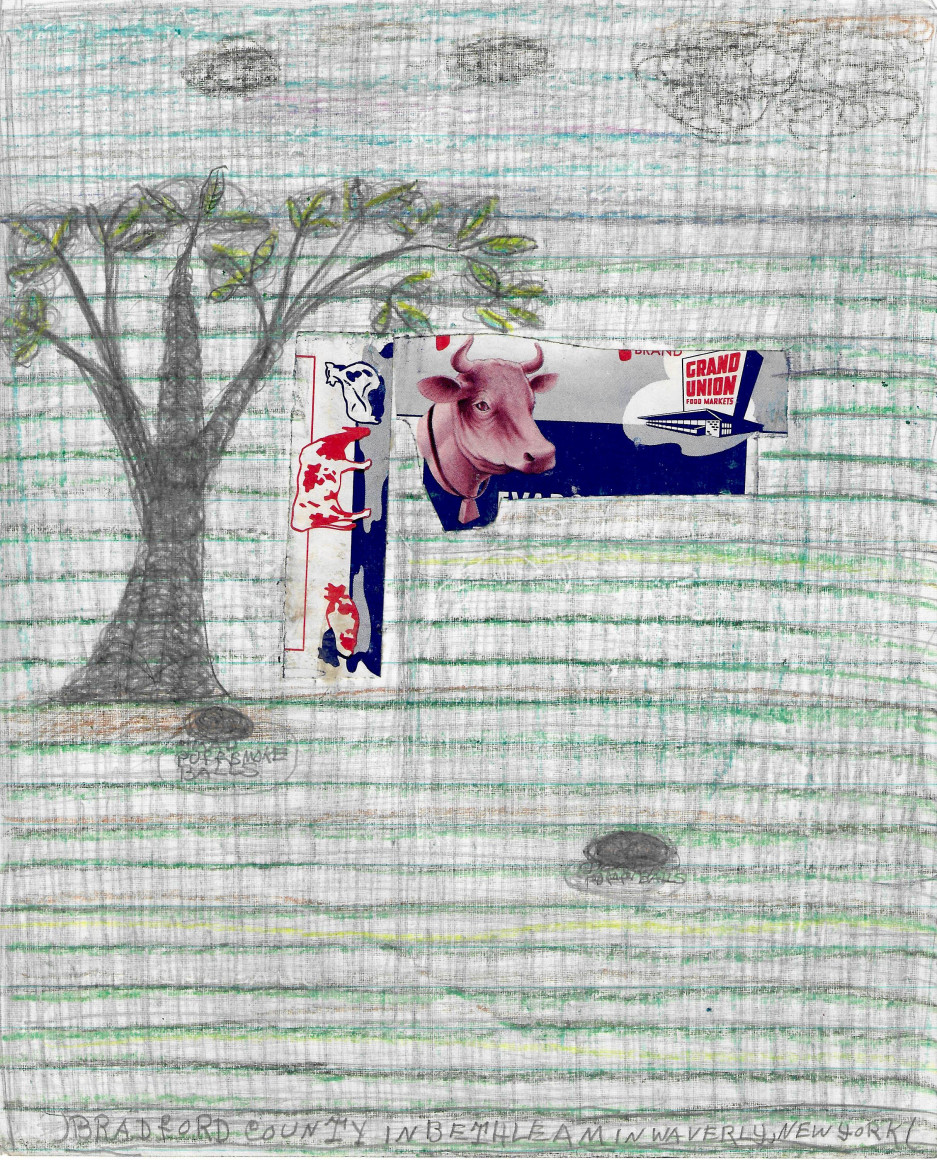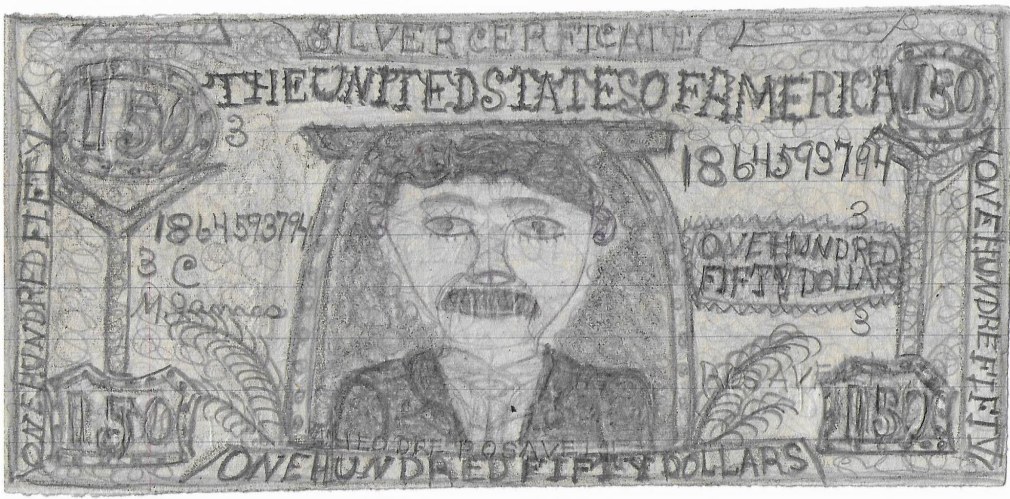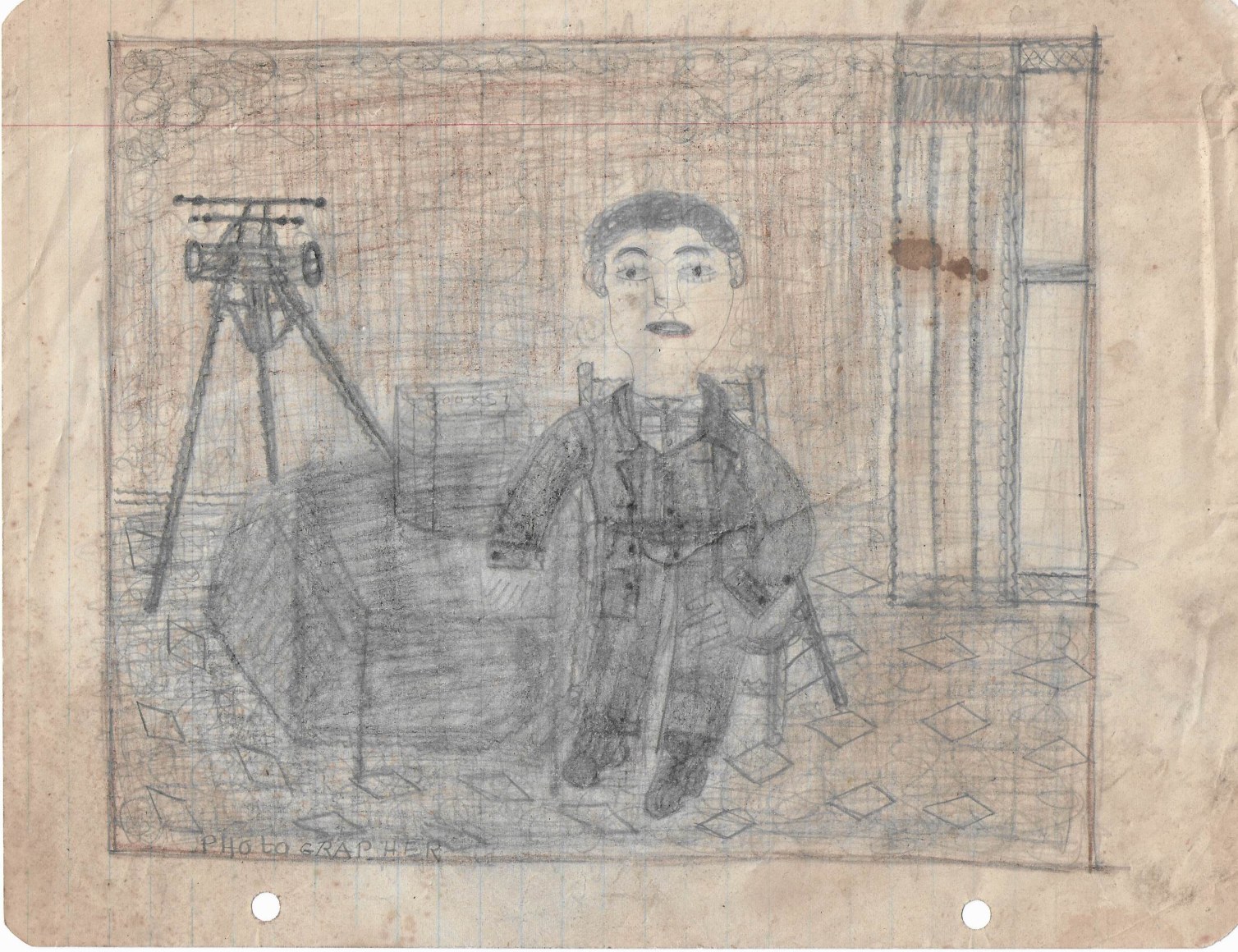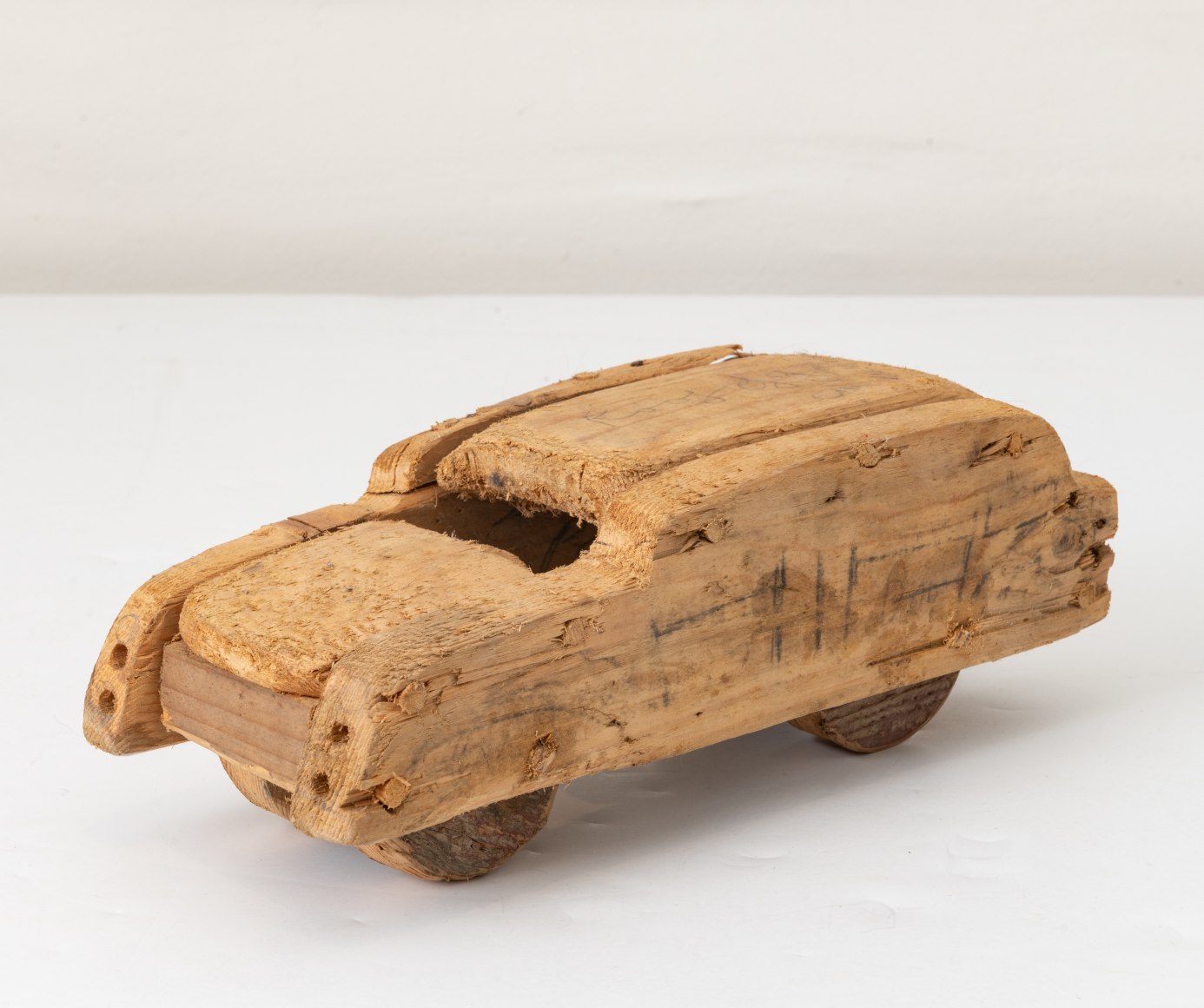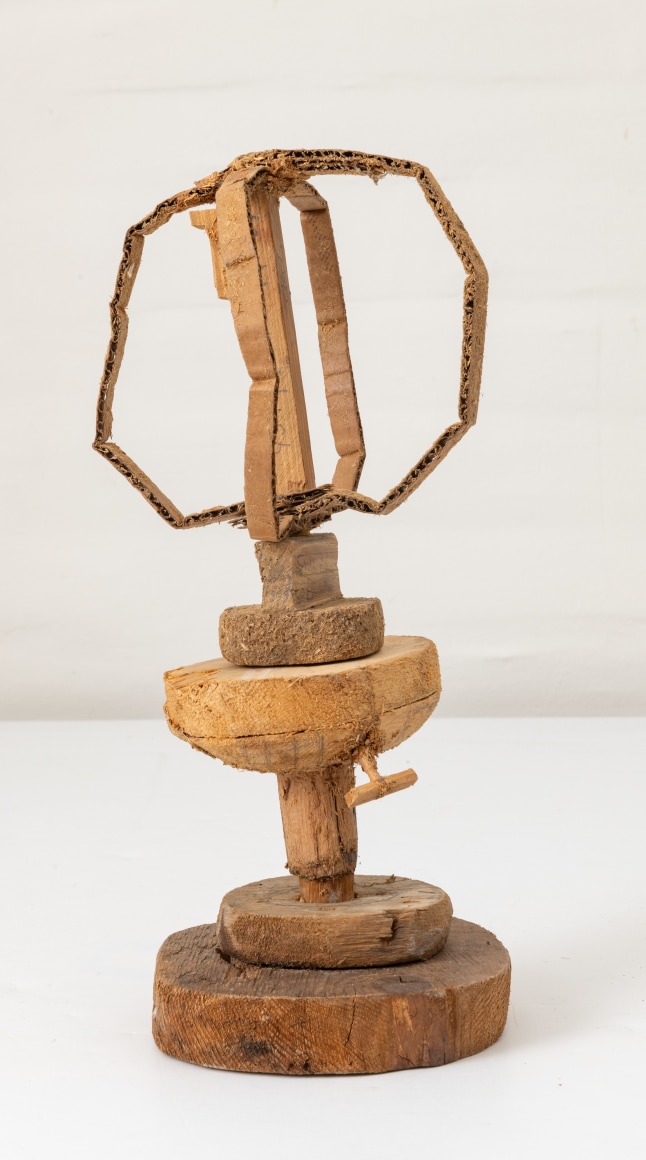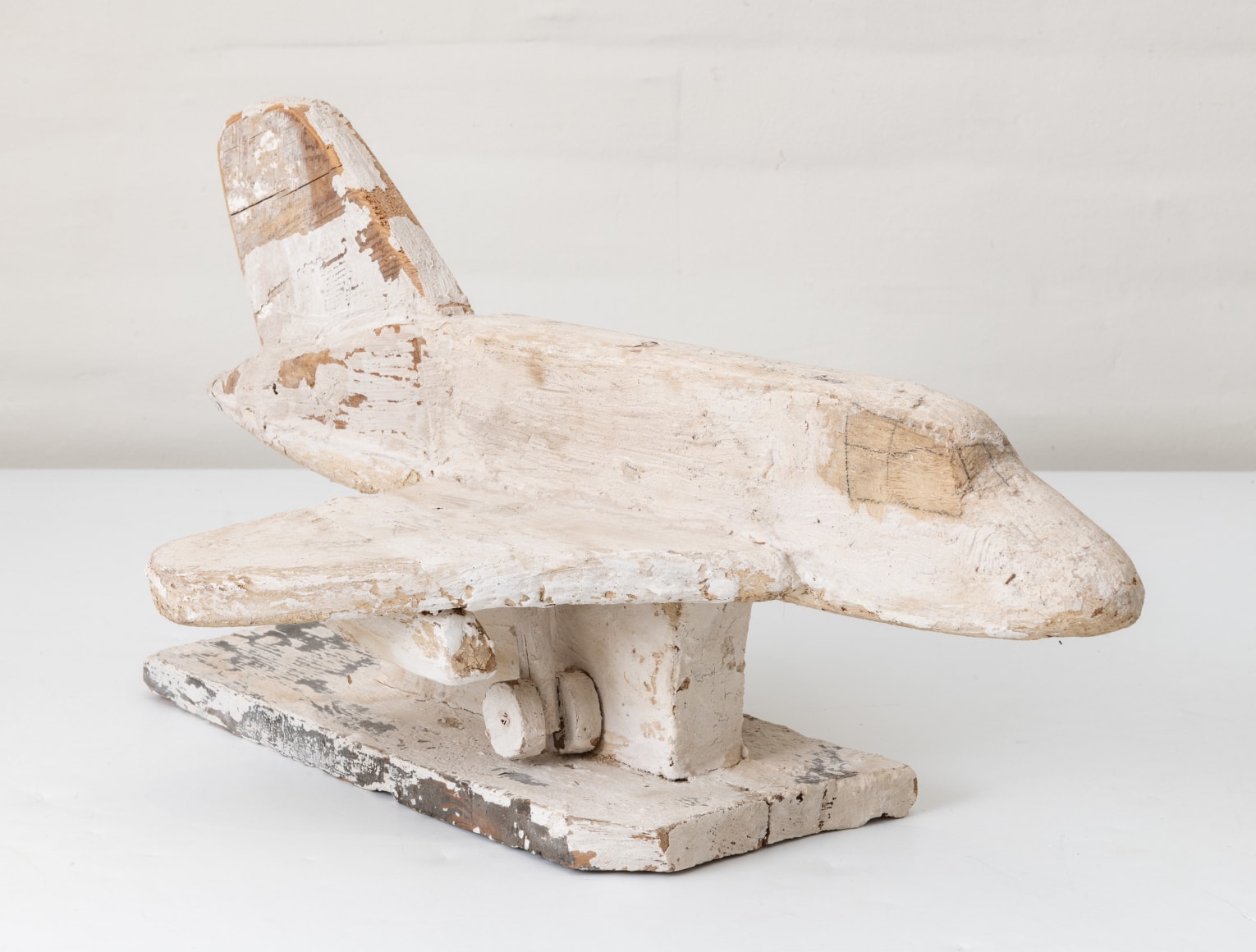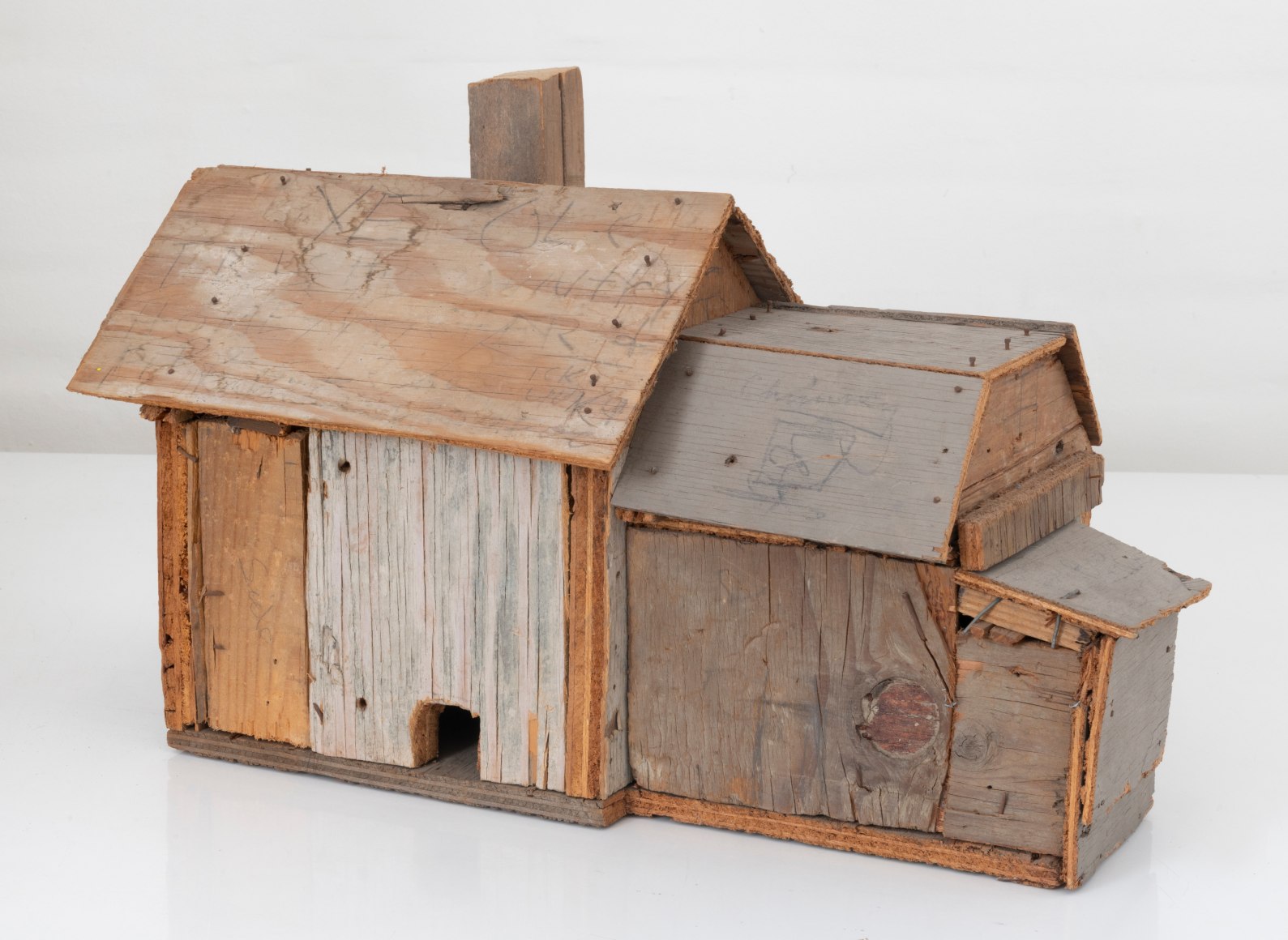Unaccompanied Conversations
James Castle, Pearl Blauvelt, John Byam
January 13 – February 17, 2024
Unaccompanied Conversations explores the work of three artists: the now acclaimed Outsider James Castle, Pearl Blauvelt, and John Byam, all of whom were untrained and from modest circumstances, yet developed unique approaches to their art using unconventional materials. And they all devoted their lives to their art in the face of little or no market support.
Besides their exceptional talent, these artists all shared traits of neurodiversity. They did not process information the way most people do, or hold “normal” conversations, even the banal—like commenting on the weather. But viewing the works of Castle, Blauvelt, and Byam can be like overhearing the conversations, often deep, sometimes funny, frequently intense, but always unusual, that have played out in the artists’ minds.
Since people who exhibit a range of divergent characteristics are often deemed intentionally antisocial, the talents of the neurodivergent have often been overlooked. Because of their inability to verbally articulate what they mean, interactions can be strained, leading to fear, misunderstanding, shunning, and pejorative labels. Pearl Blauvelt produced her drawings while living alone in a small town in Pennsylvania where she may or may not have known that she was called the "village witch."
James Castle (1899-1977), now considered a canonical figure, faced more challenges than most. He was born deaf and lived at home nearly his entire life. He started drawing when he was 6 years old. His preferred materials were paper, usually repurposed, and ink made of spit and soot from his family's potbellied stove. Using domestic finds, like laundry bluing for color, he depicted his environment in thousands of small drawings, books, and assemblages. Castle's parents, postmasters who worked from their living room in a small town in Idaho, provided him with an endless flow of calendars, catalogues, and eye-catching ads for inspiration, and a variety of papers that he reused for his art.
At the age of 10 he went to live at a school for the deaf and blind for 5 years, but when he returned home, he was still unable to speak, sign, or read. But he was happy to rejoin his large, supportive family and resume his full-time artmaking.
The surfaces of Castle's drawings are often roughed up, so that the paper fibers create a patterned background of their own. Working in layers, Castle applied soot and spit with a quill, and added other media for emphasis. His subjects include interior and exterior scenes, memories, and sly commentaries on consumer goods. Squarish figures sometimes haunt his drawings and remain a mystery.
James Castle's prolific artistic output was discovered in the 1950's, and he lived to see his work exhibited for the first time at the Boise Art Museum in 1963.
Pearl Blauvelt (1893-1987) wasn't so fortunate. We only learned about her at all because 800 of her drawings were found in a box in the abandoned house in northeastern Pennsylvania, where she had lived for over 50 years. She and her father had moved there in the early twentieth century. Later, she lived in the house alone with no running water or electricity and only a coal stove for heat. When the house was sold, years after her death, the owners discovered the cache of drawings.
Blauvelt's compositions are filled with yearning, but precise in their longing. She admired the clothes and furniture in mail-order catalogues and drew them in pencil on lined notebook paper, often arranged in abstract clusters, sometimes with subtle additions of colored pencil. She also drew landscapes, houses, railroads, and other scenes of small-town life. Her more complex works show the outlines of each element distinctly. If an arm overlaps a leg, each is shown as if they had been x-rayed. Certain components may be exaggerated or shrunk; many have writing on them. Some drawings include Biblical notations —Blauvelt's family was Dutch, and an earlier generation had helped found the First Dutch Reformed Church in the Hudson Valley.
By the 1970s, Blauvelt could no longer live by herself and was moved to a mental facility in Pennsylvania, where she continued to draw until her death. But no drawings from that period have surfaced to date.
We know about John Byam (1929-2013) thanks to an antiques dealer and collector who bought a few of his small sculptures at a local auction in 1988 in upstate New York. Identified only as works by "the trailer park carver," they had been put up for sale by Byam's family.
Born in Oneonta, Byam worked a low-level job for the railroads until the Korean War, where he was stationed with the Army in Japan. He did not see combat and worked in the supply chain. After the war, Byam helped his mother and stepfather care for their trailer park in upstate New York, occasionally working as a gravedigger in a nearby cemetery. His family knew Byam was a loner but were unprepared for the upset when a woman at the trailer park noticed him looking through her window and called the police. Instead of jail, he was sent to the Binghamton State Hospital for psychiatric evaluation. There, he was given electric shock treatments and returned home "much better" according to a family member. After being diagnosed as mentally handicapped, possibly on the autism spectrum, Byam began receiving a monthly disability check that freed him from working at the trailer park or anywhere else. He returned to his art and worked constantly at his small wood sculptures and drawings for the rest of his life.
Byam's idiosyncratic use of wood, glue, and sawdust transformed the tradition of rural wood carving into something much more distinctive.
His renditions of planes, missiles, spaceships, cars, and other machines are not hard-edged instruments of aggression, but more soft-edged mother ships of protection. This rounding appears in his sculptures of people, books, and other objects: the poetic gentling of these figures remains his trademark.
Later, when Byam was moved to an assisted living facility, he wrote long letters to people he didn't know, and made drawings based on stories from periodicals like Parade and Reader's Digest, often with playful commentary about current events. On a visit to Byam late in his life, the antiques dealer noticed his right—dominant—arm, was immobilized after some mishap. Byam picked up a pencil in his left hand and kept drawing. He never stopped. Nor did Blauvelt. Nor did Castle.
James Castle's work is included in major museum collections throughout the United States including the American Folk Art Museum (New York), the Museum of Modern Art (New York), the Whitney Museum of American Art (New York), the Philadelphia Museum of Art, the High Museum of Art (Atlanta), the Boise Art Museum, and the Art Institute of Chicago. His work has been exhibited internationally including at the 55th Venice Biennale (2013). Solo exhibitions include the Minneapolis Institute of Art (2016), the Smithsonian Institute of Art (Washington, D.C., 2014), Museo Nacional Centro de Arte Reina Sofia (Madrid, 2011), and the Philadelphia Museum of Art (2008).
Pearl Blauvelt’s art is in the collections of the Museum of Modern Art (New York), the Pennsylvania Academy of the Fine Arts (Philadelphia) and the American Folk Art Museum (New York). Her work has been featured in numerous exhibitions at KS Art (New York) and in many group exhibitions including Memory Palaces: Inside the Collection of Audrey B. Heckler (the American Folk Art Museum, 2019), The Museum of Everything, Exhibition #1 (Pinacoteca Giovanni e Marella Agnelli, Turin 2010) and Glossolalia (MoMA NY, 2008).
John Byam’s art is in the collections of the American Folk Art Museum (New York), the Collection de l’Art Brut (Lausanne), the Collection abcd (Paris), and the Museum of Everything (London). It has been included in several international exhibitions including Collection Bruno Decharme at la maison rouge (Paris 2014-15) and Véhicules at the Collection de l’Art Brut (Lausanne, 2013-14).
~ N. F. Karlins

